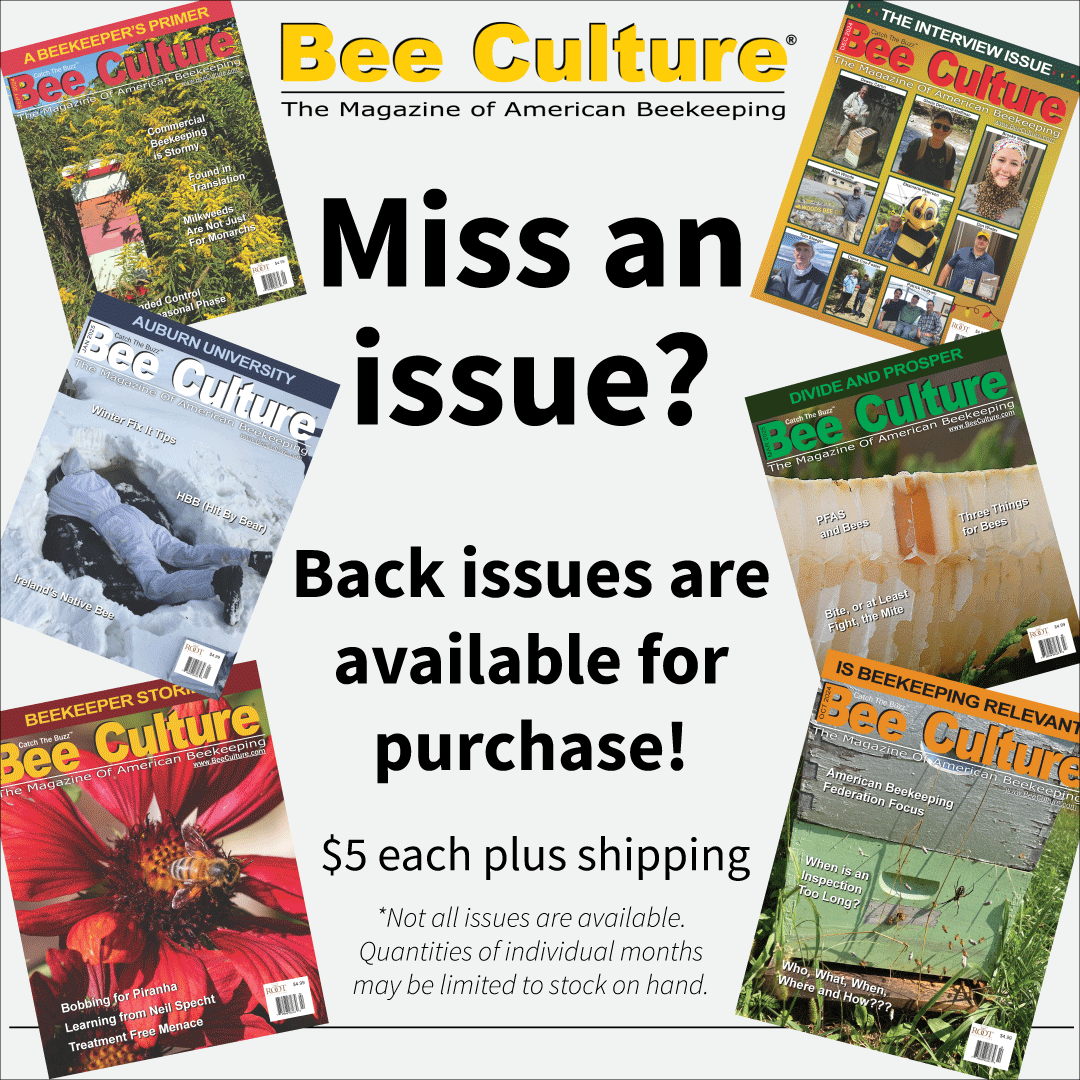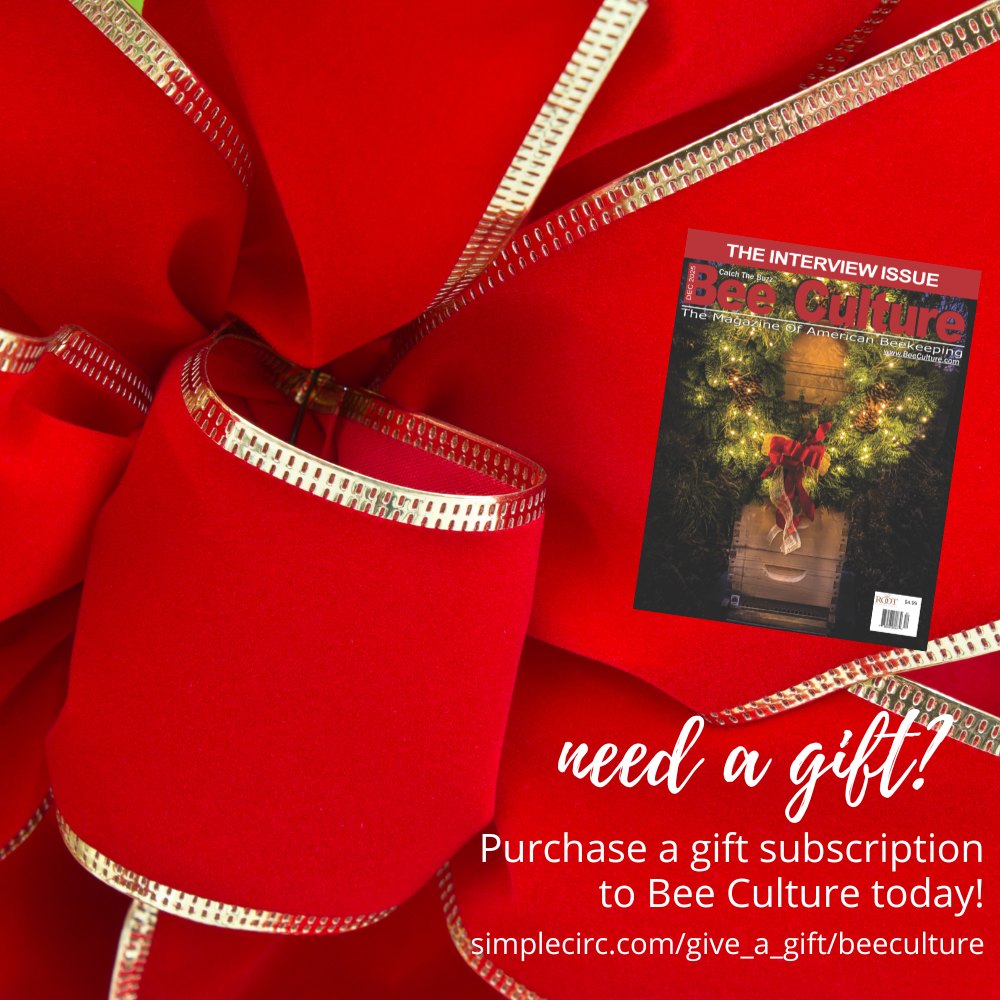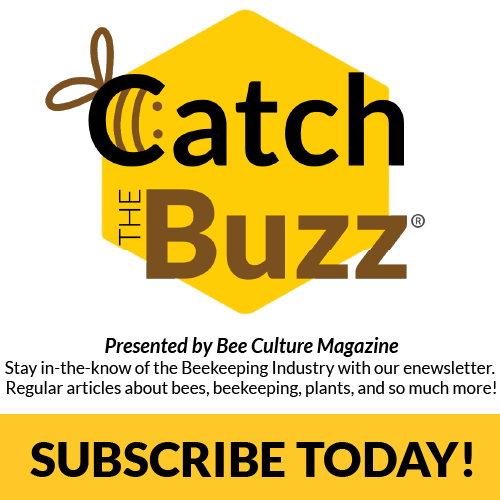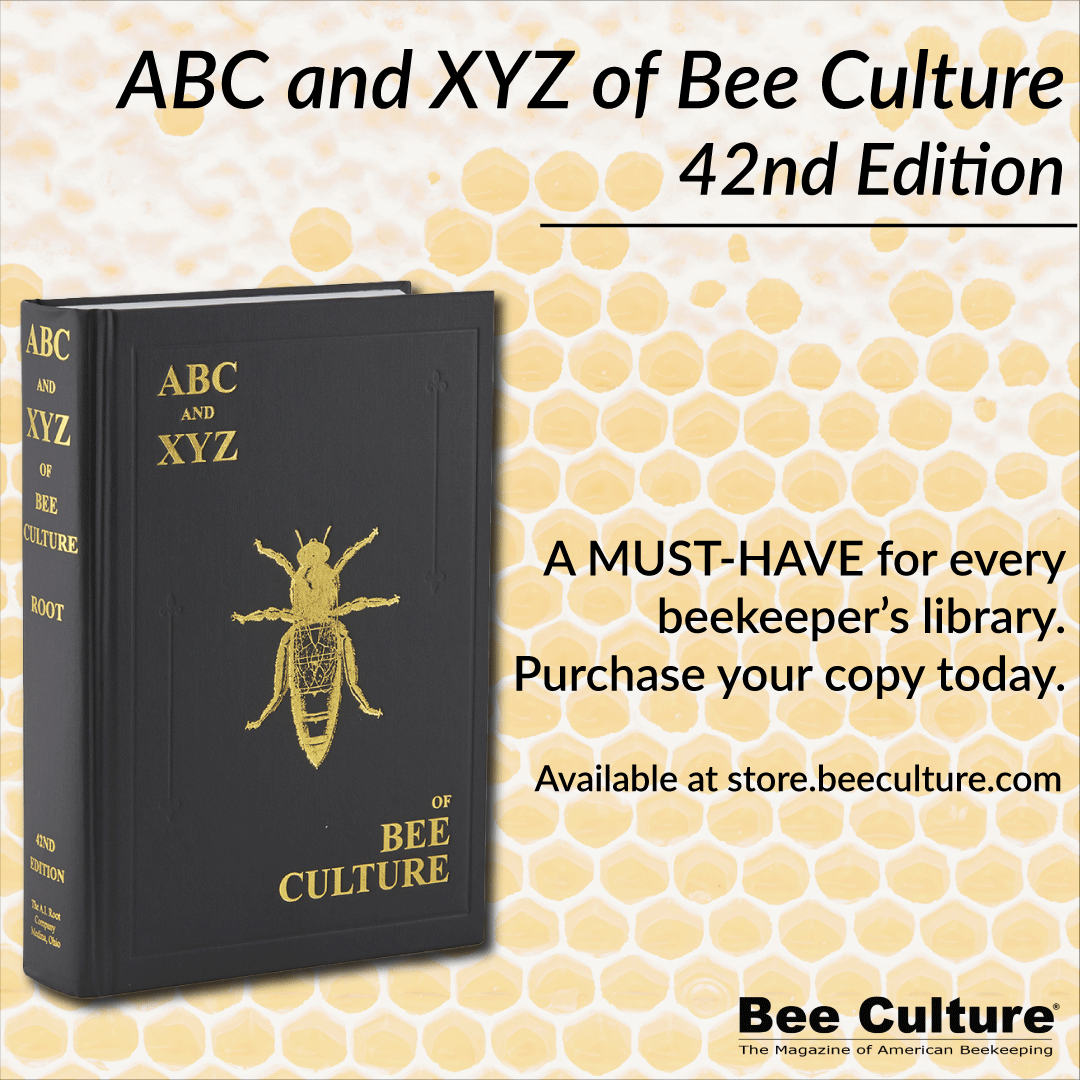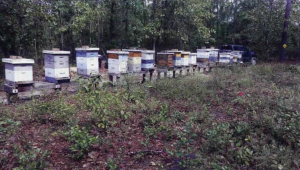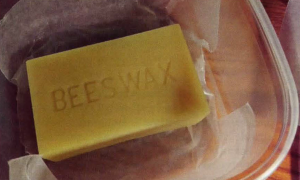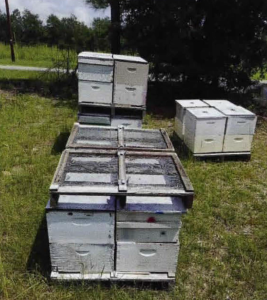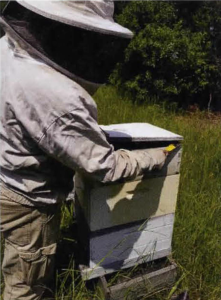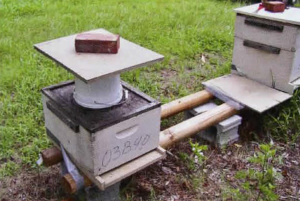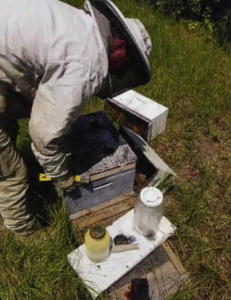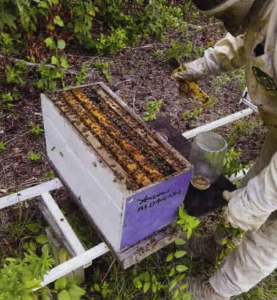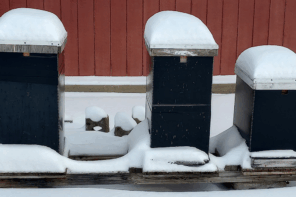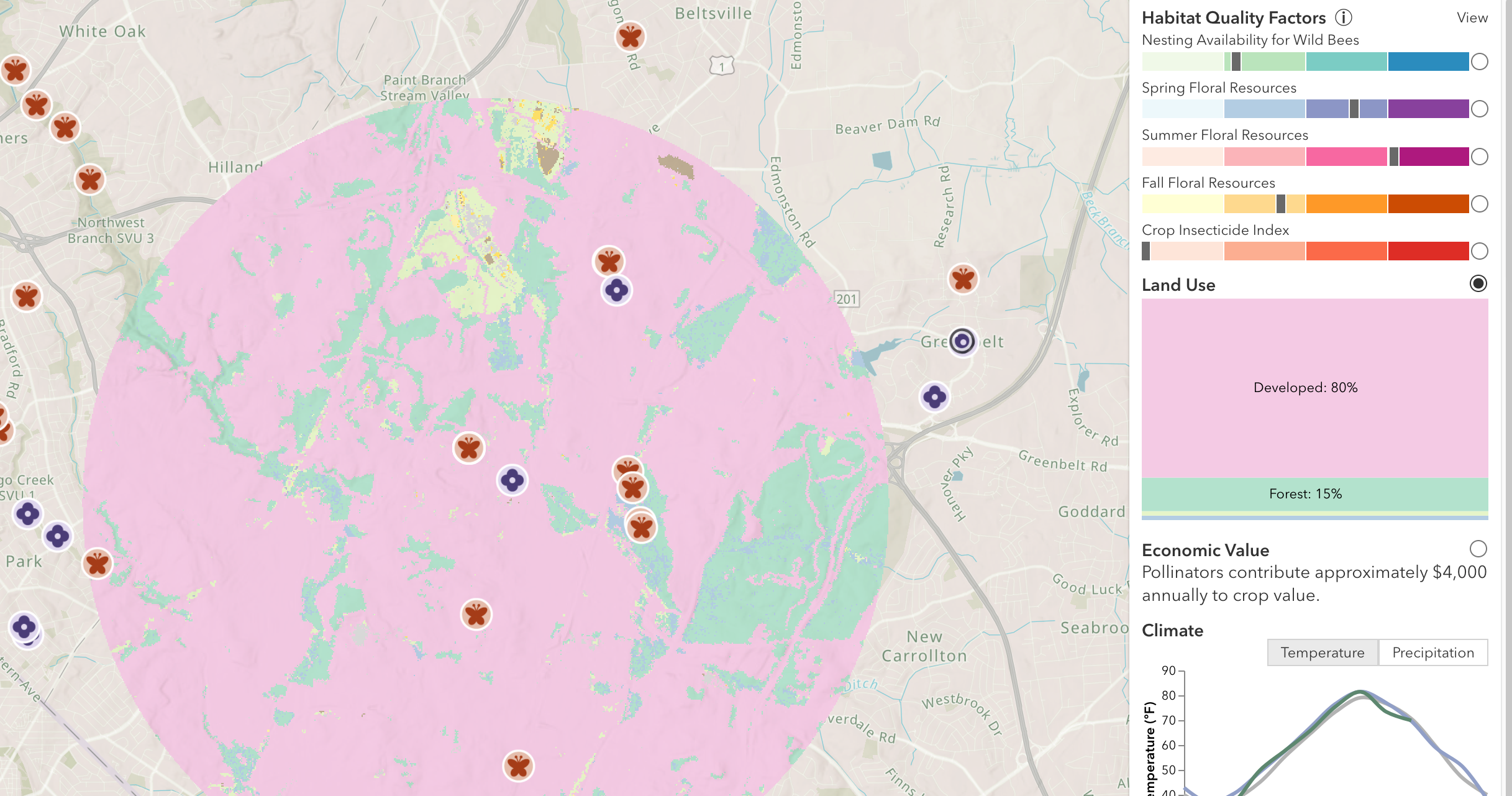By: David E. MacFawn
This article originally appeared in the Winter 2018 issue of BEEKeeping Your First Three Years
Good, well thought planning is required in the Autumn to ensure success the following Spring and Summer. Now, October and November, is the time to get ready for the next bee season. The beekeeper needs to decide:
• Generate or update your business plan. Colony growth plan.
• Financial plan.
• Sales and marketing plan.
• What type of products will you produce: honey, beeswax, pollen, propolis, NUCs, and pollination services for what type of crops. How many hives/colonies are needed to support your business plan.
• Purchase, assemble, and paint the woodenware. What type of bottom board will you use? A solid or Integrated Pest Management (IPM) open screened bottom board. An IPM open screened bottom board is recommended in the south due to the heat and moisture.
• What type of cover will you use. A telescoping cover, a migratory cover, or a sheet of exterior plywood cut to size? Will an inner cover be required? What type of frames and foundation are you going to use in the brood chamber and honey supers?
• How will you feed and with what type of feeder? Division/Frame feeder, bucket/pail feeder, etc. Boardman feeders that fit into the hive entrance is only recommended for water.
• How many bee yards and other locations (like equipment yards) will you need. Yards may be different for honey production than pollination services.
• How many packages, NUCs, existing colonies you may have to purchase (if any).
• How many queens you may have to purchase and when.
• Your bee build-up and splitting strategy.
- • Feeding strategy.
- • Colony maintenance and tending strategy.
- • Should you split in the Autumn when queens are readily available or wait until Spring when queens may not be available when the drones start flying.
• If you will have outyards.
- • Where will they be and impact on colony buildup and splitting.
- • Make necessary land arrangements.
- • Survey area for forage, and bee blooming plants.
- • Financial analysis and impact, cash and time required to maintain the outyard(s).
A business, financial, and marketing plan needs to be developed or updated. This should include things such as colony growth and the resulting equipment and bee needs, supporting financial plan with cash flows identified, and marketing plan. The cash flows should determine the amount of money needed each month; expenses and revenues. The marketing plan will determine what venue you plan to sell your honey and the resulting jar and labels. What quantity will you sell your honey, pollen, etc. will determine jar size and profitability. Also, how many colonies are needed for pollination requirements.
What type of bee products produced will determine equipment needs. If you are going to produce honey, the beekeeper needs to determine the typical honey flow quantify to match their supers to the flow amount. This will help ensure full supers. Will you produce extracted honey, comb honey, or section honey? Also, the quantity of purchased equipment needs to be determined with the resulting money to purchase the equipment and time to assemble. Old equipment needs to be repaired and painted.
If you are going to pollinate crops, you may want to use eight frame equipment rather than ten frame equipment. Eight frame equipment is easier to move than ten frame equipment. Are you going to move the hives by hand or palletize the equipment? If you palletize, do you have the fork lifts and trucks available, to move the hives in and out of the fields. What are the colony pollination requirements (number of colonies per acre) and do you have sufficient colonies to support the farmer’s operation? How is you bee build-up strategy going to support your pollination requirements? How many packages will you need to purchase, existing hives, NUCs, or colonies split?
Financial planning is also required to determine your cash needs for equipment, mileage/gas, feed, treatments, etc. How much will you get for your bee products, like honey, and when will you receive the money? In the south, the nectar flow is during the Spring with the resulting sales in the Summer and Autumn. How much will you get for pollination and again, when will you receive the money? Cash flow analysis is critical to determine monthly and weekly cash sufficiency.
Colony management in the early Winter, through Spring is important. Will you start feeding in January to split early (for example first of March in South Carolina). What percentage of bee losses do you anticipate and how will the bee losses impact your ability to service pollination contracts or honey yield. Will you cull weak colonies no later than October? Will you treat your colonies with Oxalic Acid for Varroa mites in later part of November first of December, when the brood is at its lowest point? When treating with Oxalic Acid, will you drizzle or use sublimation. Refer to Randy Oliver’s website (scientificbeekeeping.com) for information on using either. Sublimation will cost you more money and time to do than drizzle. When and with what will you treat your colonies during other times of the year? What is your mite monitoring strategy to assess if treating is required? Will you use “sticky boards”, alcohol or detergent wash, etc.
It takes time to assess potential future bee yards. Research needs to be done online, in libraries, with contacting local associations, and state entomologist, to determine the suitability of a potential yard for nectar flow. Will you build-up colonies in the outyard with earlier bloom to produce honey at the outyard, or are you going to build up in a distance outyard and move the colonies for a nectar flow? You need to push the financial numbers to determine what is the most profitable. When do the Maples boom for the first pollen and nectar? A yard location that is dry, in the sun, and out of the Winter winds is desired. When are the nectar flows and dearth periods (periods of no bloom) for each of your outyards? In the south, often there is a dearth during the Summer. Land owners need to be researched and contacted. On-line county information can be used to determine land owners. What will you give the land owner for yard rent?
Should you split in the Autumn when queens are readily available or wait until Spring when queens may not be available, and when the drones start flying. If you split in the Spring, you may have to do a walk-away split, where you split the colony and let the bees raise another queen from eggs/larvae. If you do a walk-away split, it will typically take six weeks for the workers to emerge and another three weeks for the workers to mature and start foraging. How will this time line impact your honey production or pollination requirements? Often, if you split in the Autumn, feed the colonies starting in January, you may be able to get another split in. Use of drawn comb is preferred over foundation.
A lot of thinking and research needs to occur in October and November to ensure success the following year. What you will produce, colony count, equipment needs, cash flows, management and treating strategy, outyard requirements, and more needs to be thought through. Careful planning in the Autumn will ensure success the following bee year.

